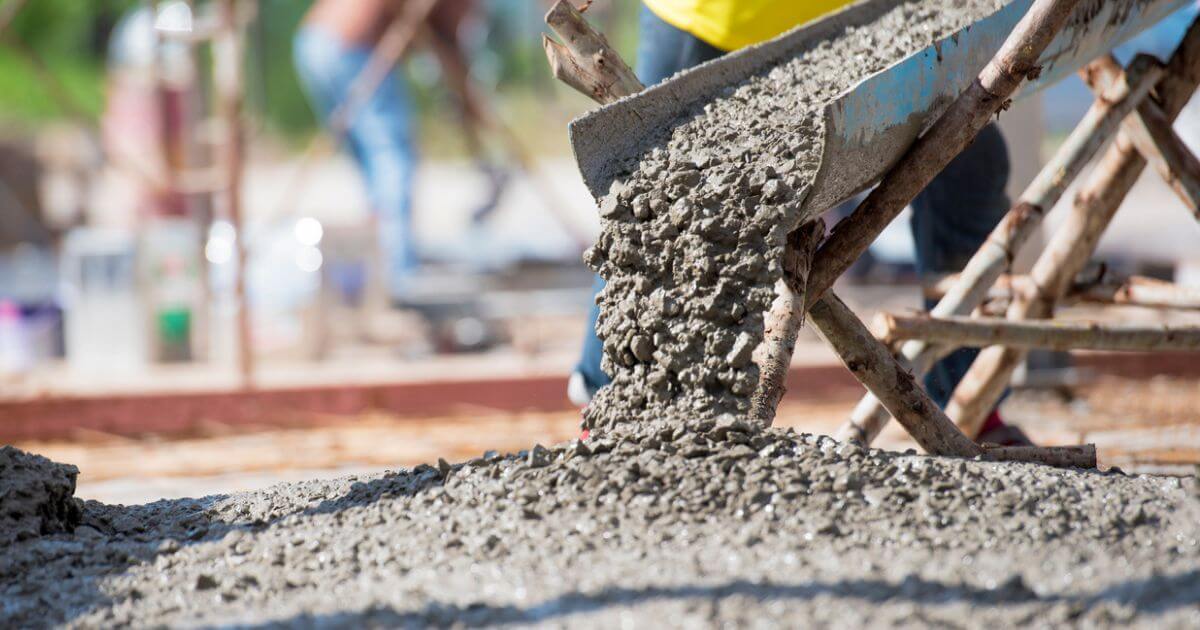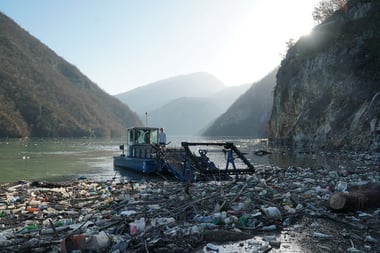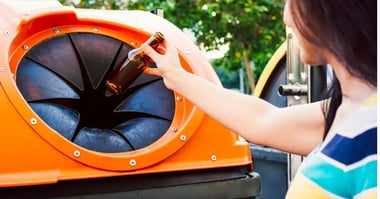
Tamara Davison
Tamara Davison is a journalist who specializes in sustainability and the environment. Reporting from around the world, she's seen firsthand the direct impact waste is having on coastal communities and our oceans. As a diver trained in ecological monitoring, the changes Tamara has seen in marine habitats inspired her to action. She's previously written for The Guardian, The Independent and the Evening Standard. She's also produced environmental documentaries for EuroNews.
Unfortunately, not everything can be recycled or turned into new products — but that doesn't mean they need to be dumped or burned, harming the environment and local communities.
Co-processing is a procedure that utilizes waste materials and turns them into energy instead of sending them to landfills or incineration.
One key material used in this process is non-recyclable plastic, meaning co-processing can help avoid excessive plastic pollution already impacting our planet.
Co-processing is carried out in industrial settings and has grown in popularity, as the world explores how to deal with increasing levels of waste. But is this the answer to our world’s waste problem? Here’s what you need to know.
Want your business to work towards a circular economy? Connect with our experts to assess your packaging and learn which steps your brand can take to achieve this goal.
What’s on this page?
01 | What is co-processing?
02 | How is co-processing used in the cement industry?
03 | Is co-processing environmentally friendly?
04 | Pros and cons of co-processing
05 | Which countries use co-processing the most?
06 | FAQs
What is co-processing?
Co-processing is a waste management method that uses combustion to transform waste products into fuel and raw materials. This helps conserve energy and resources elsewhere in material production, reducing industrial reliance on raw and virgin materials that are currently depleting at an unsustainable rate.
In the co-processing space, waste products are seen as a resource instead of something to be discarded, which supports a circular economy. Instead of polluting our environment or sending them to landfills, they're given a different purpose.
The practice is particularly popular in cement manufacturing, the world’s most widely used man-made building material. In the European cement industry, 48% of fuel comes from alternative sources, saving 21 million tonnes of CO2 from being emitted into our atmosphere annually. While the cement industry is the current leader, other sectors using kilns could do the same.
The cement industry reportedly needs around 1,600kg of raw material and 200kg of coal to make 1 ton of clinker, the main ingredient in cement. However, co-processing decreases the reliance on both these resources.
The most interesting thing about co-processing is its connection to waste.
Our world’s existing waste management and recycling practices are unfortunately falling short. More than three-quarters of waste that ends up in landfills could have been recycled, and even biodegradable materials like food release massive methane emissions when sent to landfills.
Even waste destined for recycling sometimes goes to waste. According to the OECD, just 9% of plastic waste gets recycled, highlighting massive inefficiencies in existing practices.
Co-processing offers an alternative solution for waste plastic that’s been contaminated or mixed with other materials.
The process can use various waste products, which can dramatically reduce the amount of trash gathered in landfills worldwide. This includes household municipal solid waste (MSW) like plastic, paper, and textiles and industrial waste like scrap tires, biomass, and concrete rubble.
How does it work?
Co-processing requires many complex steps and industrial machinery to achieve the desired results. Some practices may vary, depending on the type of waste they use and their location, but here are the simplified steps:
- Preparation: The waste is prepared for co-processing through sorting processes, which ensure that non-combustible or hazardous materials are removed from the mix.
- Combustion: The waste is then put through a cement kiln, which exposes the materials to super-high heat of around 1,450°C (2,642°F). This causes the waste to combust and release energy, leading to the creation of ‘alternative fuels and raw materials’ (AFR). During this phase, the waste is completely destroyed.
- Energy recovery: The heat generated through this process replaces the need for primary fossil fuels in cement production, meaning no new resources need to be extracted from the ground
- Material recovery: Minerals and leftover ash from the combusted waste residue are used as raw material to make clinker.
What’s the difference between co-processing and incineration?
It’s easy to mistake co-processing and incineration for the same thing because they both burn waste in high-heat machines.
However, the similarities end there. Incineration and co-processing are different because of their outcomes.
Although it can sometimes be used to recover energy, the main goal of incineration is to eradicate the volume of waste products by burning them into ash without really considering sustainability. The practice isn’t as good for the planet as co-processing because it produces considerable toxic fumes that fuel climate change and pose health challenges.
What’s more, the bottom ashes from the incineration process will still be deposited in landfills.
Co-processing is considered more sustainable because it ensures that waste is used for another purpose. During co-processing, waste generates heat and minerals that benefit industrial practices. When products are completely burned up, the byproducts are re-used in cement mixtures.
The heat in the cement kiln is also considerably higher than in it is a standard incinerator, so the process — if run right — shouldn't release toxins and furans (toxic chemicals).
Although co-processing does release some emissions, cement kilns also use flue gas cleaning systems that help to capture harmful particles and components, preventing them from being released into the environment.
Another major advantage to co-processing is that the infrastructure already exists — that means no additional emissions building a new system to destroy waste.
How is co-processing used in the cement industry?
Co-processing generates the energy needed to manufacture cement products, helping cement companies reduce emissions while cutting costs.
The residue is then used to make clinker (an ingredient typically made from limestone and clay), further reducing the need for investments in raw materials. By supporting a circular economy through co-processing, the cement industry can benefit from improved resource management and reduced fossil fuel emissions.
Like other industries, the global cement market is being called upon to adopt more sustainable practices, so co-processing also benefits the industry as we look toward a greener future.
However, we should stress that this is not the end goal — it's a short-term solution to a wider challenge. Although co-processing reduces emissions in the cement industry, it will never irradicate them completely. This serves as a reminder that we need to continue searching for greener ways of working across all industries — and use the best methods available in the meantime.
Evidently, the use of co-processing in the cement market is already growing. According to Cembureau, the European Cement Association, some cement plants in Germany and Austria already use 100% alternative fuels and 12% alternative raw materials in their manufacturing.
The European Cement Association predicted this trend will continue to grow. By 2030, the organization expects around 60% of the cement industry's energy to come from co-processing and alternative fuels, and by 2050, the sector could be net-zero.
The cement industry is also well positioned to prepare for further regulatory requirements that may evolve as governments look for sustainable ways to future-proof business. Cement plants that focus on co-processing can similarly earn a competitive edge as governments seek partners that can help tackle the world’s mounting waste problem.

Is co-processing environmentally friendly?
Co-processing is sometimes marketed as a sustainable solution for recycling and waste management — but how true is this?
Well, despite reducing some industries' carbon footprints, we wouldn't class it as environmentally friendly because it still generates emissions. However, it's also one of the few solutions we have to the mounting plastic pollution problem for non-recyclable materials. It's a short-term solution for a long-term challenge — the lesser of evils, but not a process we'd want to rely on forever.
The industry does have the potential to help clean up mountains of waste gathered in overflowing landfills and other waste destined for our rivers and oceans.
So far, it’s also one of the most scalable solutions to non-recyclable waste. As a result, developments surrounding co-processing are likely to continue expanding.
At the same time, co-processing shouldn’t be seen as the only solution to our planet’s waste problem. Some products, such as batteries and medical waste, cannot be processed because they are hazardous. Similarly, PVC and plastics containing halogens must be removed during the sorting phase as they release harmful chemicals when incinerated.
In addition to limitations in the co-processing product types, it’s also not entirely emission-free. Carbon emissions are released from waste transport to combustion and shouldn’t be touted as environmentally friendly. Reports have highlighted concerns about the release of harmful furan and dioxin toxins if kilns aren’t optimized properly.
While cement manufacturers must adhere to emissions regulations, there’s little public information about the amount of emissions actually linked to co-processing. A blog called Down to Earth also suggested there is a “veil of secrecy” about co-processing data.
While co-processing may help us reduce waste, we need to focus on introducing a more circular economy by reducing single-use materials and creating products that can be reused infinitely.
Pros and cons of co-processing
It's important to weigh the strengths and weaknesses of co-processing to understand its potential future impact on our world.
Pros
- A chance to utilize non-recyclable waste: According to the UNEP, 100 million metric tons of plastic from short-lived products will need a disposal solution by 2040. Co-processing could be the answer for some of these waste items, as it destroys durable plastics while reaping benefits from the process.
- Potentially more environmentally friendly: Co-processing reduces waste, requires less reliance on fossil fuels, and promotes a circular economy, suggesting it’s more beneficial for the environment than alternative practices like incineration.
- Cost benefits: A Geocycle report claimed that up to €15.6 billion typically spent on waste management buildings and infrastructure could be saved if we invest more in co-processing. There are also considerable cost savings from replacing fossil fuels with waste combustion and long-term financial benefits of supporting a more sustainable planet. Plastic credit systems could also be used in the future to incentivize co-processing practices further.
- Opportunity to scale: Many solutions to traditionally non-recyclable plastics are relatively small-scale, but co-processing is a scalable option because most countries have cement kilns. The Geocycle report also referred to a study that suggested there’s little stopping co-processing from expanding, claiming “there is no technical limitation at the cement plants to increase the share of alternative fuels from 36% now to 95% EU-wide.”
Cons
- Not everything can be co-processed: There are technical limitations to what can go into the cement kiln. For example, PVC has a very high chlorine concentration, which clogs up the kiln and can bring operations to a halt at the cement plant. It would be wrong to say co-processing is a solution to the world’s waste because it ultimately only masks the problem of excessive waste production.
- Uncertainty around emissions data: There is little public, independent, and up-to-date information about the co-processing industry. This makes it difficult to determine exactly what emissions are released during this process or whether they pose any health risks. One 2023 study noted the unintentional release of polychlorinated dibenzo-p-dioxins and dibenzofurans from cement kilns that burn waste; however, the researchers added that more investigations were needed.
- Depends on cement demand: This industry's profitability and expansion ultimately depend on the cement products market. A decline here is unlikely, but it’s worth pointing out that this waste management method depends on another industry's success — which comes with risk.
|
Pros |
Cons |
|
Utilizes non-recyclable waste |
Not everything can be used in co-processing |
|
Potentially more environmentally friendly than incineration |
Uncertainty around emissions data linked to co-processing |
|
Can help businesses save money |
Depends on demand in the cement market |
|
There’s an opportunity to scale up |
|
|
Contributes to a circular economy |
|
Which countries use co-processing the most?
Co-processing is promising, but factors like regulation and existing waste-management infrastructures influence a country’s ability to reduce waste using this method.
Reports show that several European countries are interested in developing co-processing systems. Data from the European Union shows that those rates between member states vary from 7% to 95%. Geocycle, a company that focuses on coprocessing, claims to have 86 locations in Europe and others in the Americas and the Middle East.
The potential of future co-processing hotspots around our world will also depend on a country’s cement industry. According to World Population Review, China currently produces the most cement in the world, and a 2021 study concluded that: “With the modernization and development of China's cement industry, most cement production lines have the technical conditions and production scale for co-processing of municipal solid waste (MWS).”
Summary
Co-processing isn’t necessarily a new concept, but it’s now gathering ground because more people are paying attention to the planet’s monumental waste problem.
The industry is showing promise, and there is a lot of room for further innovation and development in this sphere.
While co-processing can help with waste, it’s not a silver bullet for our planet’s plastic problem.
However, it shows that innovative solutions are constantly emerging, giving us hope for solving our planet’s waste crisis.
At CleanHub, we’re committed to helping brands improve their environmental impact and work toward a more circular economy. Want to get involved? Get in touch with our experts today to learn about how you can reduce your business’s plastic footprint.
FAQs
What is the co-processing method?
Co-processing relies on waste combustion to generate energy and raw materials in industry. This practice is considered sustainable as it helps eradicate waste while serving as a replacement for fossil fuels.
What is an example of co-processing?
The most common example of co-processing happens in the cement industry. Here, cement manufacturers burn waste products in a cement kiln, generating heat that helps manufacture the cement. The ash byproduct of co-processing is used to make clinker, which is also used to make cement.
What is the meaning of something being co-processed?
When something is co-processed, it results from a process that uses waste to generate energy and raw materials. It’s seen as an effective way to address climate change as it uses materials that would have otherwise gone to landfills while reducing the combustion of fossil fuels.

.webp)
.webp?width=380&name=Recycling-plant%20(1).webp)
.webp?width=380&name=CleanHub-collectors-%20(1).webp)
.webp?width=380&name=ESG-meeting%20(1).webp)
.png?width=380&name=CleanHub%20Bcorp%20(1).png)

.webp?width=380&name=CleanHub-waste-sorters-%20(1).webp)

.webp?width=380&name=Water-bottles%20(1).webp)

.webp?width=380&name=Plastic-water-bottles%20(1).webp)
